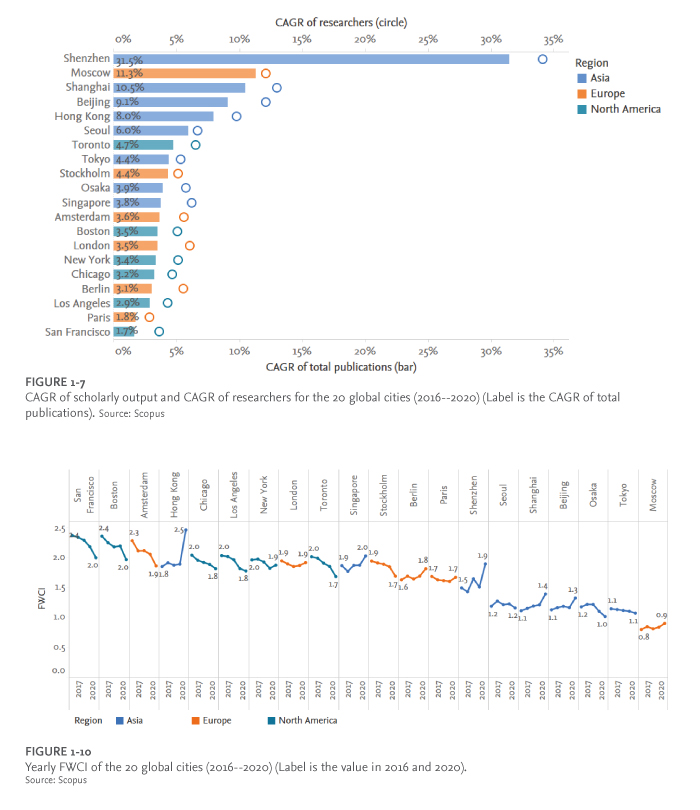
The report, Data and Insights on International Science, Technology, and Innovation—Comparative Research Report of 20 Global Cities (2016–2020), produced by Elsevier in collaboration with the Administrative Center of Shanghai R&D Public Service Platforms - analyses academic and industry research activity in 20 major cities.
Major findings include:
- While all cities have seen growth in the volume of publications and researchers (see fig. 1.7), Asian cities are responsible for some of the largest increases; for example, Shenzhen leads in terms of researcher growth, followed by two other Chinese cities, Shanghai and Beijing. This reflects China’s increased efforts to cultivate, support and introduce talent.
- Cities with prestigious higher education systems (see fig. 1.10) continue to show high scholarly excellence. However, the field-weighted citation impact (FWCI) of several Asian cities is on the rise, at a time when many European cities are either seeing a decline in theirs (Amsterdam, Stockholm) or no change (London, Paris). This is consistent with other indications that Asia is increasingly challenging Europe and North America. Although the proportion of highly-cited publications in most Asian cities is currently low, their growth rate is impressive.
How can Europe maintain its excellent position in research and innovation?
The report’s findings contain some useful pointers for European cities, such as:
- In 12 of the 20 cities, ‘‘transitory’’ researchers have a relatively high impact (FWCI), indicating that scientists who move location are more highly cited, on average, than those who don’t.
- For all 20 cities, trends in scholarly output are generally aligned with trends in researcher numbers, suggesting that investment in researchers increases research outputs.
- Patents represent the most economically valuable part of technology assets and can be a useful proxy for a city’s technology innovation level. The report shows that in terms of patent applications, the top five cities are all in Asia and together account for 87.2% of all applications made.
Powered by Scopus




 A unique international forum for public research organisations and companies to connect their external engagement with strategic interests around their R&D system.
A unique international forum for public research organisations and companies to connect their external engagement with strategic interests around their R&D system.